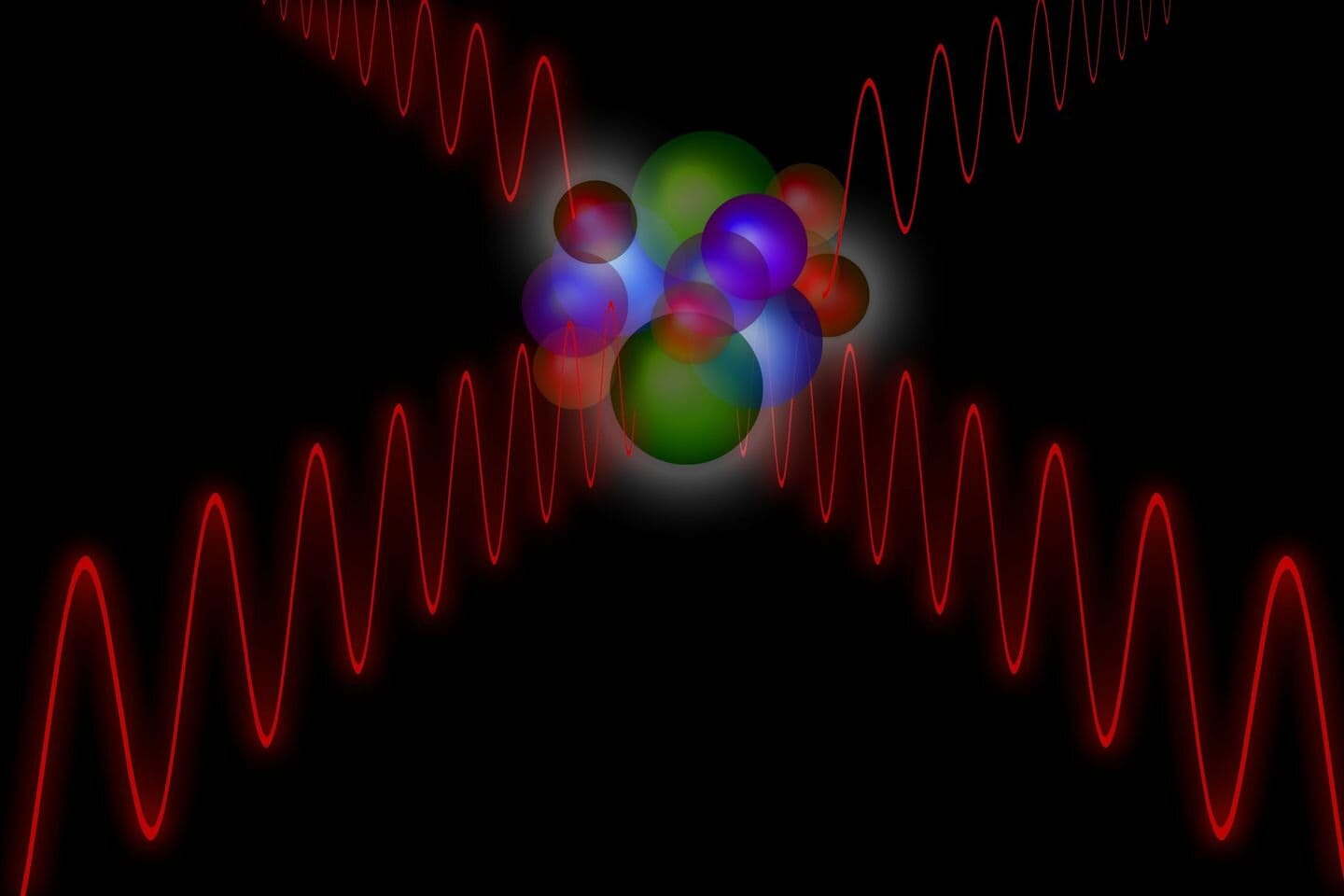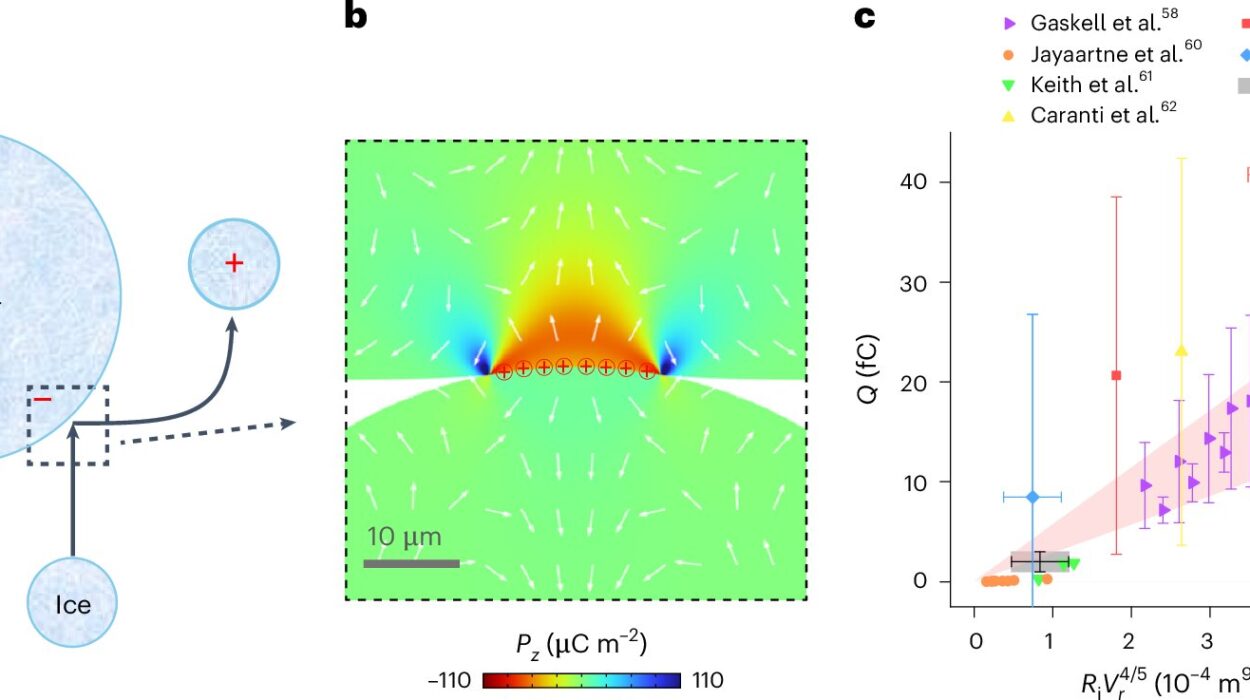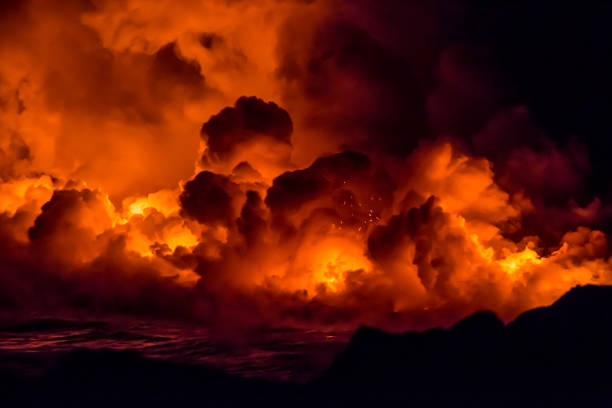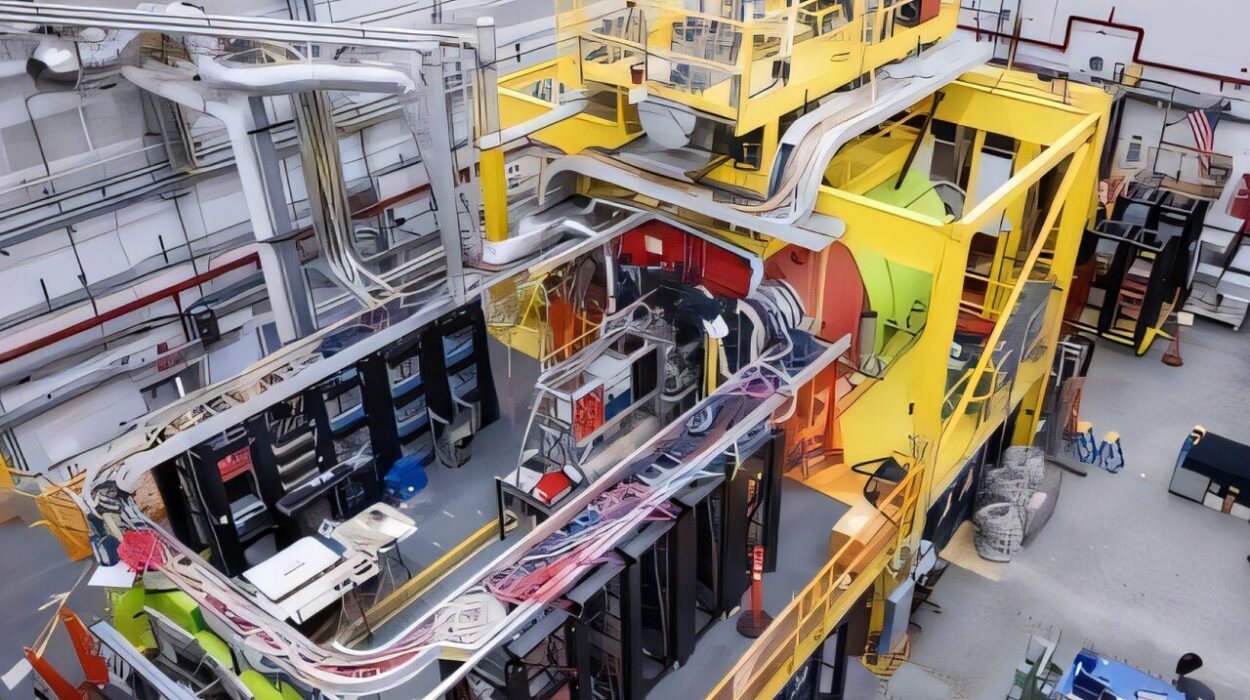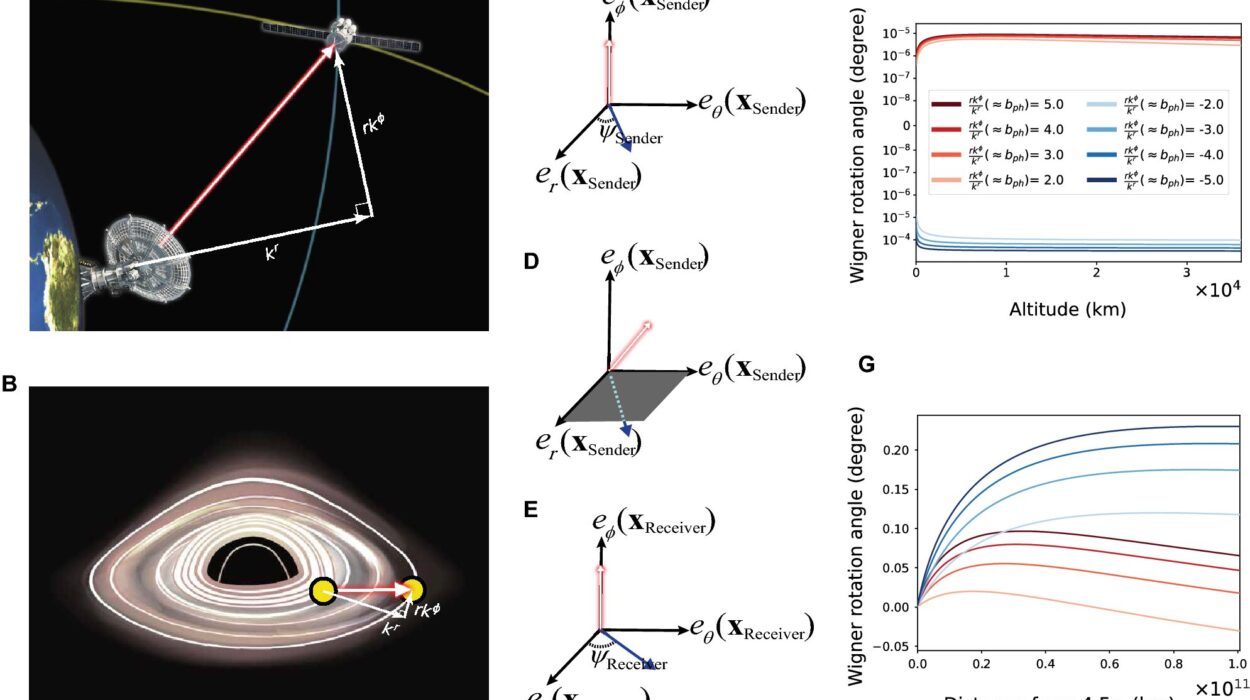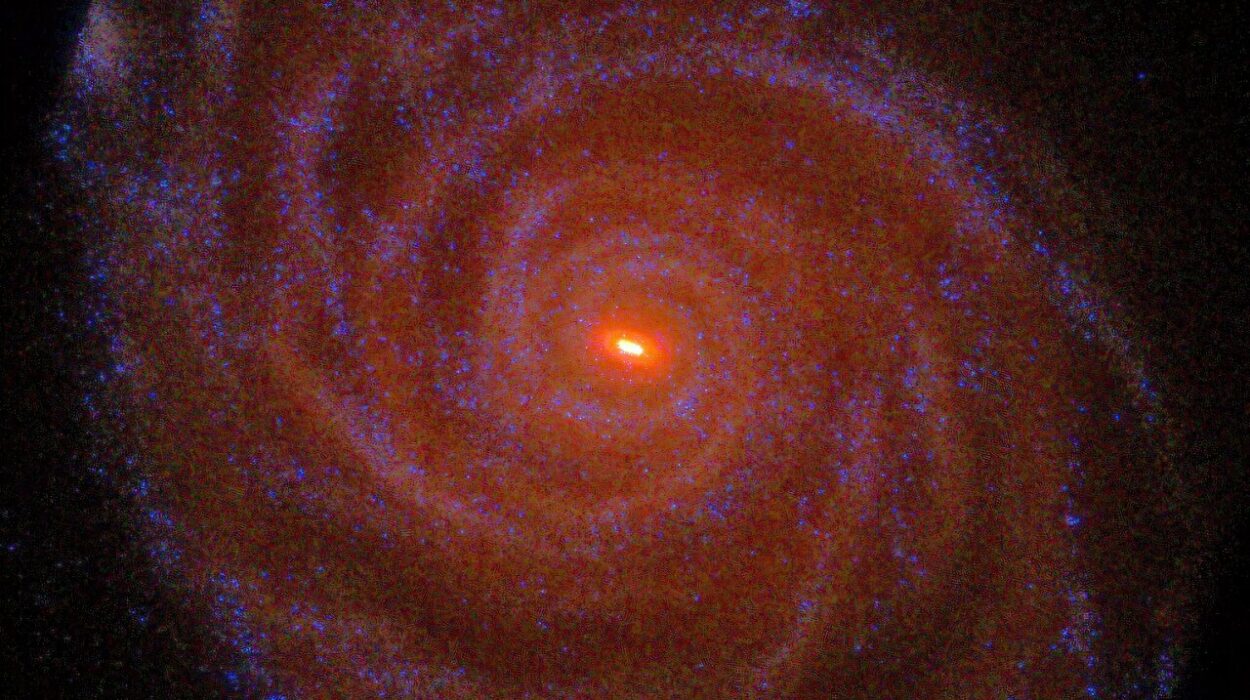In the everyday world, beams of light pass through each other like ghosts. Shine two flashlights so their beams overlap, and nothing changes—no collision, no interference, no dramatic spark. According to classical electrodynamics, that’s perfectly expected. Light waves don’t jostle each other the way billiard balls do. They coexist, transparent to one another.
But beneath the surface of this elegant simplicity, quantum physics tells a more mysterious story. In that invisible realm, even light isn’t immune to interaction. A rare and elusive process known as light-by-light scattering suggests that under certain conditions, two photons—particles of light—can briefly, almost imperceptibly, interact.
This phenomenon has long been predicted by quantum theory and was observed indirectly at the CERN particle accelerator. Now, a new study from a team of theoretical physicists at TU Wien (Vienna University of Technology) has added a surprising twist to this tale. By revisiting an overlooked contributor to the process—tensor mesons—the team has revealed that these ghostly intermediaries may play a much bigger role in light-on-light interactions than anyone previously believed.
The findings, published in the journal Physical Review Letters, may significantly influence how we test the boundaries of the Standard Model of particle physics, especially in experiments involving muons, the heavier cousins of electrons.
Where Light Doesn’t Just Shine—It Collides
If light usually passes through light, how can it ever bounce, scatter, or deflect? The key lies in the quantum vacuum, a place that isn’t empty at all.
In the quantum world, space is alive with flickering fields. Even a vacuum—a region with no real particles—teems with activity. Energy fluctuations can momentarily conjure up virtual particles, which exist for a fraction of a second before disappearing. This ephemeral world allows for interactions that classical physics would forbid.
So, when two photons approach each other at incredibly high energies, they might briefly create virtual particles—like electron-positron pairs—that momentarily exist just long enough to alter the photons’ paths. The process is unimaginably rare under ordinary conditions, but at particle accelerators like CERN, where intense beams collide with cosmic violence, this ghostly phenomenon becomes observable.
“Even though these virtual particles cannot be observed directly, they have a measurable effect on other particles,” explains Jonas Mager, lead author of the TU Wien study. “If you want to calculate precisely how real particles behave, you have to take all conceivable virtual particles into account correctly. That’s what makes this task so difficult—but also so interesting.”
Muons, Mesons, and the Unexpected Twist
The light-on-light scattering process becomes even more tangled when not just electrons and positrons, but heavier virtual particles are involved. One such group is mesons—particles made of a quark and an antiquark, bound by the strong nuclear force. These are not merely exotic features of particle accelerators; they’re crucial for understanding how photons influence one another in extreme environments.
Among mesons, a particular kind known as tensor mesons had long been considered minor contributors to photon-photon scattering. Their effect was either simplified drastically or dismissed as negligible in high-precision calculations. But the new analysis challenges this view.
According to Mager and his colleagues, tensor mesons don’t just contribute more than expected—they do so in the opposite direction to what previous models assumed. That’s not just a correction—it’s a potential game-changer.
This revelation could have significant consequences for one of the most sensitive indicators of new physics: the anomalous magnetic moment of the muon.
Why the Muon Matters More Than You Think
Muons are similar to electrons but around 200 times heavier. They’re unstable and fleeting, living for only microseconds, but in that brief lifespan, they carry within them the fingerprints of all known forces—and possibly unknown ones.
In one of the most carefully measured experiments in physics, scientists track how muons behave in magnetic fields. The results are compared to what theory predicts. A discrepancy between the two could hint at new particles or forces beyond the Standard Model—an entire realm of unexplored physics.
But before we declare the Standard Model broken, we need to be absolutely sure we’re not missing anything in our calculations. That’s where the work on tensor mesons comes in.
By more accurately modeling their contribution to photon-photon interactions, researchers can reduce the uncertainty in theoretical predictions for the muon’s behavior. That, in turn, sharpens our tools for detecting any truly new physics lurking in the data.
A Bold Mathematical Map from Gravity to Light
To make sense of tensor mesons’ complex behavior, the TU Wien team didn’t just refine existing models—they took a leap into holographic quantum chromodynamics (QCD), a theoretical framework that connects quantum particles with gravity in a higher-dimensional space.
Sound strange? It is.
Imagine projecting the complex physics of our universe, which has three spatial dimensions and one time dimension, onto a five-dimensional stage. In this higher-dimensional space, certain problems—especially those involving strong nuclear interactions—become more manageable. Solutions found there can be translated back into our four-dimensional reality.
“The tensor mesons can be mapped onto five-dimensional gravitons, for which Einstein’s theory of gravity makes clear predictions,” explains Anton Rebhan, co-author of the study. “This method gives us new insight into how mesons influence light-light scattering, and ultimately, how we interpret high-precision experiments.”
This technique not only offered a new way to calculate the effect of tensor mesons but also helped resolve inconsistencies between different theoretical approaches—especially between traditional analytic methods and modern numerical simulations.
A Deeper Test of the Standard Model
The Standard Model of particle physics is one of the most successful scientific theories ever constructed. It explains how fundamental particles interact through three of the four known forces: electromagnetic, weak, and strong interactions. Only gravity remains unincorporated.
But as precise and powerful as it is, the Standard Model has limits. It doesn’t explain dark matter, dark energy, or gravity. It doesn’t answer why there are three generations of particles or what came before the Big Bang. Physicists have been searching for tiny cracks in the model—anomalies that might signal something beyond.
The muon magnetic moment is one of those cracks. For years, measurements have hinted at a slight deviation from theoretical predictions. Not enough to shout “new physics,” but enough to whisper it.
By refining how we account for all possible virtual particles—including tensor mesons—the TU Wien team is helping to close the gap between theory and experiment. If the discrepancy remains, it strengthens the case for undiscovered particles or forces. If it vanishes, it confirms the Standard Model’s power—but also its limitations.
Either way, the journey deepens our understanding of the quantum world.
The Invisible World Made Visible
It’s hard to grasp the sheer weirdness of what the TU Wien team is exploring. They’re studying how unseeable particles, created from nothing, that live for less than a blink of an eye, can change how light itself behaves. And from that delicate quantum ripple, they are helping to determine whether the laws that govern our universe are truly complete—or just part of the story.
This is not science fiction. There are no light sabers clashing in the lab. Instead, this is science reality at its most profound—a place where mathematics becomes a telescope into the structure of space and time, and where even the most fleeting, virtual events have consequences for everything we know.
As experimentalists at Fermilab and other facilities prepare new measurements of the muon’s magnetic moment, they will depend on calculations like these—where overlooked particles like tensor mesons may tip the scales.
So next time you cross beams of light, remember: even in that quiet glow, the quantum world is busy, buzzing, and possibly rewriting the very nature of reality.
More information: Jonas Mager et al, Longitudinal short-distance constraints on hadronic light-by-light scattering and tensor-meson contributions to the muon g−2, Physical Review Letters (2025). DOI: 10.1103/dxwr-gpsl. On arXiv: DOI: 10.48550/arxiv.2501.19293
